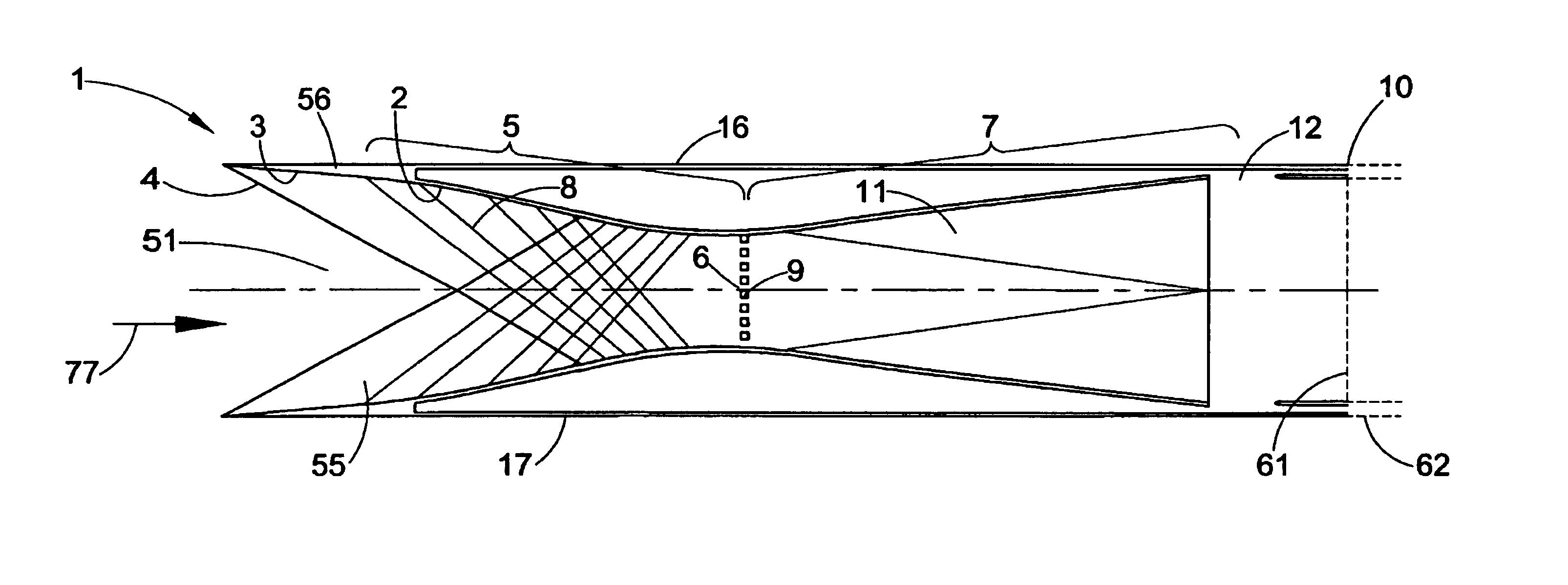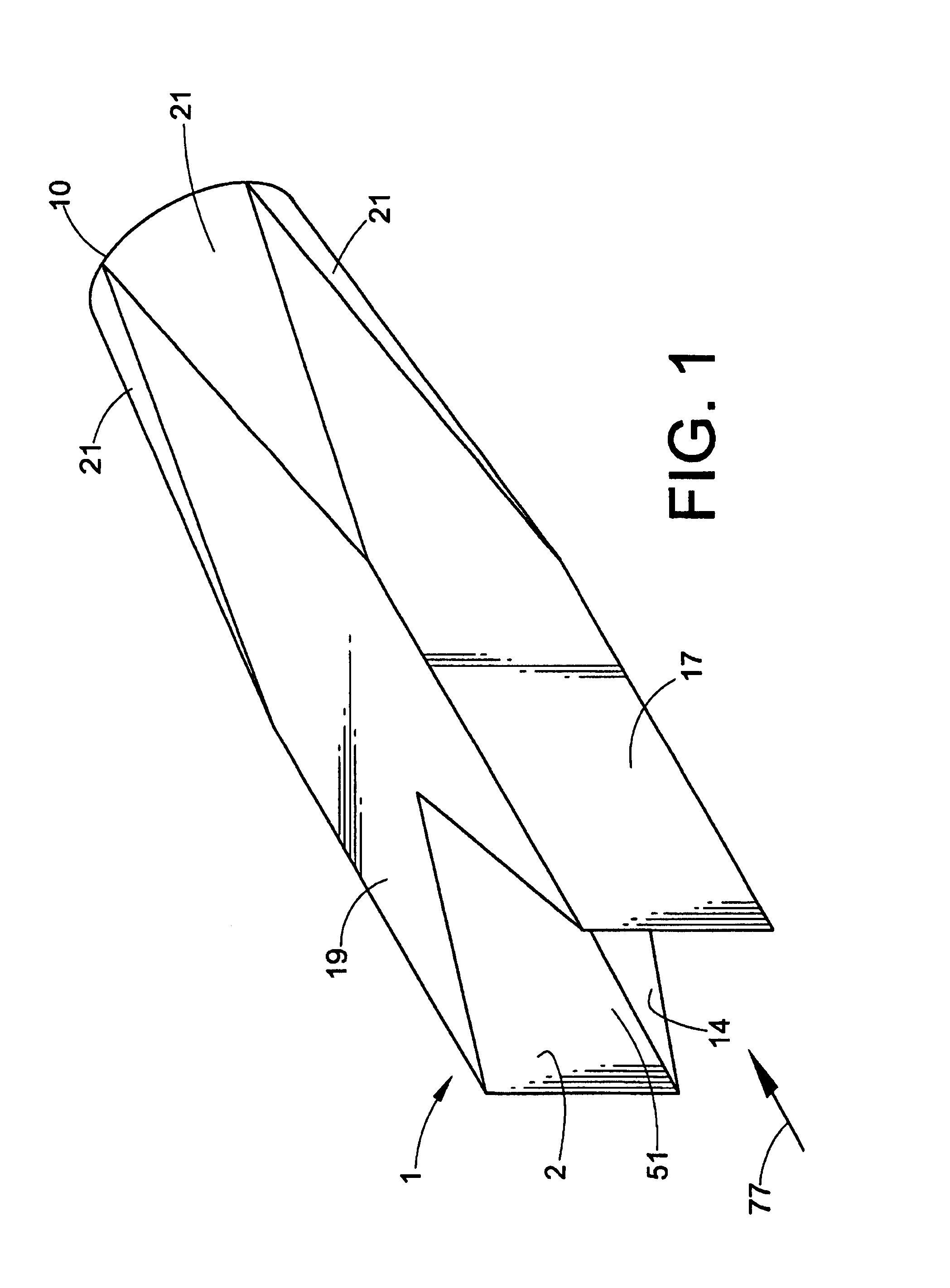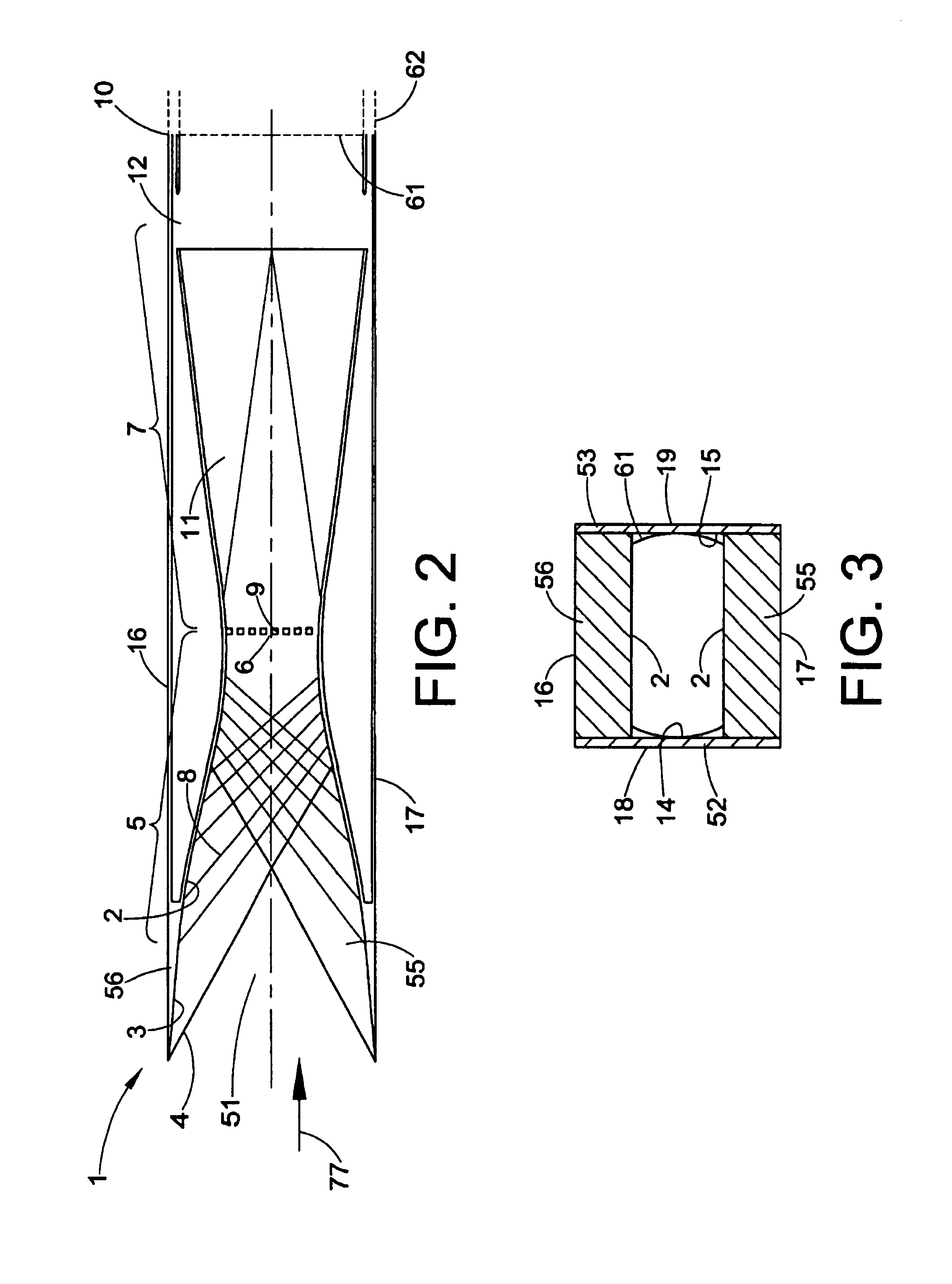Low sonic boom inlet for supersonic aircraft
a supersonic aircraft and low sonic boom technology, applied in the direction of efficient propulsion technologies, machines/engines, transportation and packaging, etc., to achieve the effect of reducing the probability of inlet unstart, high performance, and large operability margins
- Summary
- Abstract
- Description
- Claims
- Application Information
AI Technical Summary
Benefits of technology
Problems solved by technology
Method used
Image
Examples
Embodiment Construction
[0024]The basic inlet concept is presented in FIGS. 1 through 14. FIG. 1 shows an isometric view of the inlet, referred to generally as 1, and FIGS. 2 through 4 present cross-sections of the configuration. The isometric sketch in FIG. 1 depicts a supersonic inlet 1 in which all the external surfaces are flow-aligned, i.e aligned with the airflow approaching the inlet. The airflow approaching the inlet is substantially parallel to the inlet centerline; therefore, surfaces that are flow-aligned with the freestream airflow are also parallel to the inlet centerline. The initial external cross-sectional shape of the inlet is rectangular and then transitions as indicated by the surfaces 21 to a round nacelle at the downstream end 10. If the propulsion system uses a square or rectangular nozzle, transitioning of the inlet surfaces, as shown by surface 21 in FIG. 1, to a round nacelle is not required; therefore, the rectangular cross-section would be continued to the end of the nacelle, sta...
PUM
 Login to View More
Login to View More Abstract
Description
Claims
Application Information
 Login to View More
Login to View More - R&D
- Intellectual Property
- Life Sciences
- Materials
- Tech Scout
- Unparalleled Data Quality
- Higher Quality Content
- 60% Fewer Hallucinations
Browse by: Latest US Patents, China's latest patents, Technical Efficacy Thesaurus, Application Domain, Technology Topic, Popular Technical Reports.
© 2025 PatSnap. All rights reserved.Legal|Privacy policy|Modern Slavery Act Transparency Statement|Sitemap|About US| Contact US: help@patsnap.com



